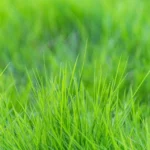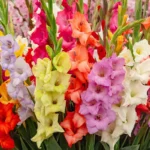
Ginkgo biloba, often referred to simply as Ginkgo, is a remarkable tree species with a rich history and unique characteristics that set it apart in the plant kingdom. Known for its distinctive fan-shaped leaves and impressive height, Ginkgo has adapted to various environments and has been cultivated for centuries. This ancient tree not only plays a significant role in urban landscaping but also has medicinal properties that have made it a popular herbal supplement. As the only surviving member of its family, Ginkgo biloba represents a fascinating blend of history, resilience, and ecological importance. Here are some intriguing facts about this extraordinary tree.
Age: Ginkgo biloba is often referred to as a “living fossil,” with its lineage dating back over 200 million years to the Permian period. This remarkable age places the Ginkgo among the oldest tree species still in existence today. It has survived various mass extinctions, including the one that wiped out the dinosaurs, showcasing its resilience and adaptability. The Ginkgo’s evolutionary history is unique, as it has no close living relatives, making it a significant subject of study for botanists and paleobotanists alike.
Height: Ginkgo trees can grow to impressive heights ranging from 20 to 35 meters (66 to 115 feet). Their tall, straight trunks and broad canopies make them a striking feature in both urban and rural landscapes. The height of these trees allows them to dominate their surroundings, providing shade and aesthetic appeal. In parks and gardens, they are often planted as specimen trees, admired for their grandeur and the beauty of their unique leaves.
Diameter: The trunk diameter of mature Ginkgo trees can reach up to 2 meters (6.5 feet). This substantial girth contributes to the tree’s stability and longevity, allowing it to withstand strong winds and adverse weather conditions. The thick trunk is often covered with a rugged, grayish-brown bark that adds to the tree’s character. As Ginkgo trees age, their trunks can develop interesting shapes and fissures, making them visually captivating and a favorite among photographers and nature enthusiasts.
Lifespan: Ginkgo trees can live for over 1,000 years, with some specimens in China believed to be around 3,000 years old. This extraordinary lifespan makes them symbols of endurance and resilience. The longevity of Ginkgo trees has made them objects of reverence in various cultures, often associated with wisdom and strength. Many ancient Ginkgo trees are protected and serve as living monuments, drawing visitors who wish to witness their grandeur and historical significance.
Leaves: Ginkgo leaves are fan-shaped and can grow up to 10-15 cm (4-6 inches) long. Their distinctive shape, with a split at the tip, sets them apart from other tree species. The leaves are a vibrant green during the growing season, turning a brilliant yellow in autumn, which creates a stunning visual display when they fall. The unique morphology of Ginkgo leaves also allows them to capture sunlight efficiently, contributing to the tree’s overall health and growth.
Fall Color: In autumn, Ginkgo leaves turn a bright yellow, creating a striking visual display that attracts attention in parks and streets. This vibrant transformation typically occurs in late October to early November, depending on the climate. The leaves often fall en masse, carpeting the ground in a golden layer, which is a spectacular sight for onlookers. This seasonal change not only enhances the aesthetic appeal of landscapes but also marks the transition into winter, making Ginkgo trees a seasonal highlight.
Seeds: The seeds of the Ginkgo tree are about 2-5 cm (0.8-2 inches) in diameter and have a fleshy outer layer. While the seeds are often used in Asian cuisine, particularly in Chinese dishes, they must be prepared properly to avoid toxicity. The seeds contain ginkgotoxin, which can be harmful if consumed in large quantities. Despite this, when cooked and consumed in moderation, they are valued for their nutritional benefits, including protein, vitamins, and minerals.
Cultivation: Ginkgo biloba is cultivated in many countries, with significant production in China, which is the native habitat of the species. The tree’s adaptability allows it to thrive in various climates, from temperate to subtropical regions. Ginkgo trees are commonly planted in parks, streets, and gardens for their ornamental value and resilience to pollution. Their ability to tolerate urban environments makes them a popular choice for city planners looking to enhance green spaces.
Medicinal Use: Ginkgo biloba extract is commonly used in herbal medicine, particularly in Europe and North America, for cognitive enhancement. Research suggests that Ginkgo may improve blood circulation and has antioxidant properties, which could benefit brain health. It is often marketed as a supplement for memory improvement and cognitive function, especially in older adults. However, while some studies show positive effects, results can vary, and further research is needed to fully understand its benefits.
Phytochemicals: The leaves of Ginkgo biloba contain various phytochemicals, including flavonoids and terpenoids, which are believed to have antioxidant properties. These compounds help protect cells from oxidative stress and may contribute to the health benefits associated with Ginkgo biloba. The presence of these phytochemicals is one reason Ginkgo extracts are popular in dietary supplements. Research continues to investigate the potential health benefits of these compounds, particularly in relation to cognitive function, cardiovascular health, and overall well-being. The antioxidant properties of flavonoids and terpenoids may play a role in reducing inflammation and supporting the body’s natural defense mechanisms against various diseases.
Ginkgo in Urban Areas: Ginkgo trees are often planted in urban areas due to their resilience to pollution and disease. They can thrive in poor soil conditions and are tolerant of environmental stressors such as compacted soil and urban heat. Their ability to withstand air pollution makes them ideal for city landscaping, where they contribute to improving air quality. Additionally, Ginkgo trees have a relatively low maintenance requirement, making them a practical choice for municipalities looking to enhance green spaces while minimizing upkeep costs.
Fossil Record: Fossilized Ginkgo leaves have been found in North America, Europe, and Asia, indicating its widespread ancient distribution. These fossils provide valuable insights into the climatic and environmental conditions of the Earth during the time Ginkgo trees flourished. The discovery of Ginkgo fossils in various geological strata highlights the species’ adaptability to changing climates over millions of years. As a result, Ginkgo biloba serves as an important subject for studying plant evolution and the history of Earth’s ecosystems.
Ginkgo’s Resilience: Ginkgo trees are highly resistant to pests and diseases, making them a popular choice for landscaping. Unlike many other tree species, Ginkgo is not susceptible to common tree diseases such as Dutch elm disease or oak wilt. Their resilience extends to their ability to tolerate drought and extreme temperatures, allowing them to thrive in diverse environments. This hardiness makes Ginkgo an excellent option for urban forestry, where trees often face challenging conditions.
Pollination: Ginkgo trees are dioecious, meaning they have separate male and female trees. Male trees produce pollen, which is released in the spring, while female trees produce seeds encased in a fleshy outer layer. The pollination process involves wind dispersal, as Ginkgo trees rely on the wind to carry pollen from male to female trees. This reproductive strategy can lead to challenges in urban settings, as many cities prefer to plant male Ginkgo trees to avoid the unpleasant odor associated with rotting female seeds.
World War II: Ginkgo trees were among the few living things to survive the atomic bombing of Hiroshima in 1945, with some trees still alive today. These trees, known as “Hiroshima Ginkgo,” symbolize resilience and hope, having withstood the catastrophic event and continued to thrive in the aftermath. The survival of these trees has made them a poignant reminder of the impact of war and the strength of nature. Today, they are protected and serve as a memorial to the victims of the bombing.
Culinary Use: The seeds of the Ginkgo tree are used in Asian cuisine, particularly in Chinese dishes, where they are known as “bai guo.” The seeds are often added to soups, stir-fries, and desserts, valued for their unique flavor and texture. However, it is crucial to prepare Ginkgo seeds properly, as they contain ginkgotoxin, which can be harmful if consumed in large quantities. Cooking the seeds reduces their toxicity, allowing them to be enjoyed safely in moderation. Their culinary use highlights the cultural significance of Ginkgo in various Asian traditions.
Ginkgo in Culture: Ginkgo biloba has been celebrated in various cultures, symbolizing longevity and resilience. In East Asia, particularly in China and Japan, Ginkgo trees are often associated with wisdom and peace. They are frequently planted near temples and schools, serving as symbols of enduring strength and knowledge. The tree’s unique appearance and historical significance have inspired artists, poets, and philosophers throughout history, making it a prominent cultural icon.
Ginkgo and Memory: Some studies suggest that Ginkgo biloba may improve memory and cognitive function, particularly in older adults experiencing cognitive decline. The proposed mechanism involves the enhancement of blood circulation to the brain, which may support cognitive processes. While some clinical trials have shown positive results, others have yielded mixed findings, indicating that more research is needed to establish the effectiveness of Ginkgo for memory enhancement. It remains a popular herbal supplement among those seeking natural cognitive support.
Tree of Life: In some traditions, Ginkgo is referred to as the “Tree of Life” due to its longevity and unique characteristics. This designation reflects the tree’s ability to survive harsh conditions and its historical significance in various cultures. The Ginkgo’s resilience and adaptability have made it a symbol of endurance, inspiring many to view it as a representation of life’s persistence against adversity. Its presence in gardens and parks often provides a sense of connection to nature and history.
Ginkgo’s Habitat: Ginkgo trees (Ginkgo biloba) are highly adaptable and can thrive in a variety of environments, though they prefer well-drained soils. These trees are known to tolerate urban conditions, making them a popular choice for city landscaping. They can grow in both acidic and alkaline soils, and their resilience allows them to survive in less-than-ideal conditions, including compacted soils and pollution. This adaptability contributes to their widespread use in parks and streetscapes around the world, where they can withstand various climatic conditions and still flourish.
Ginkgo in Medicine: Ginkgo biloba extract is one of the most widely sold herbal supplements globally, renowned for its potential health benefits. It is primarily used for enhancing cognitive function and improving memory, particularly in older adults. The extract is believed to work by increasing blood flow to the brain and acting as an antioxidant. Research has shown that it may help with conditions such as dementia and anxiety, although results can vary. Its popularity in the herbal supplement market has led to extensive research, and it remains a staple in alternative medicine.
Conservation Status: Ginkgo biloba is not considered endangered, which is remarkable given that it is the only surviving species of the Ginkgoaceae family. Its status is largely due to its widespread cultivation and the efforts of horticulturists to propagate it. Historically, Ginkgo trees were nearly extinct in the wild, but they have been preserved through cultivation in gardens and parks around the world. This successful cultivation has allowed Ginkgo to thrive in various regions, ensuring its survival and availability for future generations.
Height Records: The tallest known Ginkgo biloba tree is located in the Yuyuan Garden in Shanghai, China, measuring approximately 40 meters (131 feet). This impressive height showcases the tree’s ability to grow large and majestic when given the right conditions. The Yuyuan Garden, a classical garden with a history dating back to the Ming Dynasty, provides an ideal environment for this ancient species. The Ginkgo tree in this garden is not only a natural wonder but also a cultural symbol, representing resilience and longevity.
Ginkgo and Air Quality: Studies have shown that Ginkgo trees can significantly improve air quality by absorbing pollutants. Their broad leaves have a large surface area that captures particulate matter and other harmful substances from the air. This natural filtration process contributes to cleaner urban environments, making Ginkgo trees a valuable addition to city landscapes. By enhancing air quality, these trees also promote better health for residents, highlighting their importance in urban planning and environmental management.
Ginkgo and Biodiversity: Ginkgo biloba is unique among gymnosperms as it is the only surviving member of the Ginkgoaceae family. This ancient tree species has a rich evolutionary history, dating back over 200 million years. Its distinctive fan-shaped leaves and unique reproductive structures set it apart from other trees. The survival of Ginkgo biloba is a testament to its adaptability and resilience through changing climates and ecosystems. Its existence provides valuable insights into plant evolution and biodiversity, making it a subject of interest for botanists and ecologists alike.
FAQs About Ginkgo Biloba
What is Ginkgo Biloba?
Ginkgo biloba is an ancient tree native to China. Its leaves have been used for centuries in traditional Chinese medicine. Modern research focuses on the potential benefits of ginkgo leaf extract, which contains compounds believed to improve blood circulation and act as antioxidants.
What are the Potential Benefits of Ginkgo Biloba?
While more research is needed, ginkgo biloba has been studied for its potential benefits in several areas:
- Improved cognitive function, including memory and concentration, especially in older adults.
- Improved blood circulation by dilating blood vessels and inhibiting platelet aggregation.
- Antioxidant effects to protect cells from damage caused by free radicals.
How Does Ginkgo Biloba Work?
The exact mechanisms are not fully understood. However, it is believed to:
- Improve blood circulation by relaxing blood vessels.
- Act as an antioxidant to neutralize harmful free radicals.
- Possess anti-inflammatory properties.
Is Ginkgo Biloba Safe?
Ginkgo leaf extract is generally safe when taken as directed. However, it can cause side effects like headache, dizziness, upset stomach, and allergic reactions.
- Important: Raw or uncooked ginkgo seeds are poisonous.
- Consult your doctor before taking ginkgo if you have bleeding disorders, are pregnant, breastfeeding, or taking other medications. Ginkgo may interact with blood thinners, anticonvulsants, and other drugs.
What are the Side Effects of Ginkgo Biloba?
Common side effects include:
- Headache
- Dizziness
- Upset stomach
- Allergic reactions (rash, itching)
Less common side effects may include:
- Nausea
- Diarrhea
- Heart palpitations
How Should I Take Ginkgo Biloba?
The recommended dosage varies depending on the specific product and intended use. Follow the instructions on the product label or consult your healthcare provider.
Can I Take Ginkgo Biloba with Other Medications?
Ginkgo biloba may interact with certain medications, including blood thinners, anticonvulsants, and antidepressants. Consult your doctor before taking ginkgo if you are on any medications.
Is Ginkgo Biloba Effective for Treating Alzheimer’s Disease?
While some studies show promising results, the evidence for ginkgo’s effectiveness in treating Alzheimer’s disease is inconsistent. More research is needed.
Can Ginkgo Biloba Improve Sexual Function?
There is limited scientific evidence to support the use of ginkgo biloba for improving sexual function.
Does Ginkgo Biloba Help with Depression?
There is no conclusive evidence to suggest that ginkgo biloba is effective in treating depression.
How Long Does it Take for Ginkgo Biloba to Work?
The time it takes for ginkgo biloba to produce noticeable effects varies from person to person. Some people may experience benefits within a few weeks, while others may not notice any effects.
Disclaimer: This information is intended for general knowledge and informational purposes only and does not constitute medical advice. Always consult with a qualified healthcare professional for any medical conditions or before starting any new supplements.









